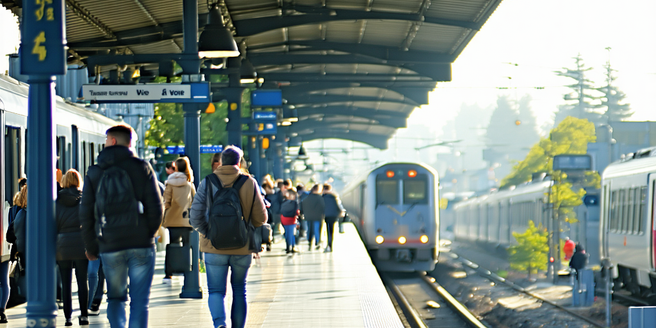Transport Access And Apartment Value

The Impact of Public Transport Proximity on Property Prices
Proximity to public transport hubs is a significant factor influencing property prices. Homes located near trains, buses, and subways often command higher prices due to the convenience they offer to residents. Easy access to public transport can enhance the appeal of a location, reducing travel times and associated costs, thus attracting a larger pool of potential buyers or tenants. This demand often leads to increased property values. Moreover, studies show that even in fluctuating markets, properties near public transport systems tend to retain value better. For investors and homebuyers, considering transport access can be crucial in decision-making, as it not only impacts daily life quality but also dictates future resale values. As urban areas expand, the value of properties near transport nodes is likely to grow, affirming the strong link between transport access and property valuation.
Analyzing the Correlation Between Transit Accessibility and Apartment Demand
The demand for apartments is significantly influenced by transit accessibility. Areas with robust transit systems tend to experience higher demand as they offer residents, and potential tenants, efficient and cost-effective commuting options. This accessibility translates into a desirable living situation that often results in lower vacancy rates and higher rental prices. The correlation is evident in metropolitan areas where public transportation is an integral part of the daily commute. As cities continue to evolve, improvements in transit infrastructure further amplify property appeal. Understanding this correlation allows urban planners and real estate investors to anticipate market trends, thus making informed decisions. Better transit options contribute not only to convenience but also to reducing urban congestion, enhancing the quality of life. Therefore, evaluating transit accessibility is vital for assessing the potential success of residential projects in growing urban environments.
Emerging Trends: The Role of Transport Networks in Urban Housing Markets
Transport networks are playing an evolving role in shaping urban housing markets. As cities continue to sprawl, the expansion of transport infrastructure is markedly affecting real estate dynamics. There’s an emerging trend where new transport links lead to the revitalization of neighborhoods, attracting developers and triggering an upswing in housing demand. Efficient transport networks not only facilitate connectivity but also unlock previously inaccessible areas, converting them into viable residential spaces. This trend is evident in megacities where urban expansion is directly tied to strategic transport planning. The introduction of faster, more reliable transport modes like light rail and rapid transit lines is contributing to an upward trend in property values. These developments suggest that the future of urban housing markets will increasingly depend on the strategic integration of transport initiatives, ensuring that urban growth remains sustainable and balanced.
Case Studies: Cities Where Transport Links Boosted Apartment Valuations
Examining case studies of cities provides insights into how transport links can boost apartment valuations. In Hong Kong, the Mass Transit Railway (MTR) has been a catalyst for property value hikes in areas along its route. Similarly, London’s Crossrail project has seen property prices around new stations soar. These improvements create enhanced connectivity and accessibility, increasing desirability and consequently property values. Another instance is seen in the suburbs of Sydney, where extensions of train services have sparked residential and commercial property growth. These examples underline a pattern where transport infrastructure investments drive real estate development by making areas more accessible. Urban planners and developers can leverage these insights to predict and stimulate property market dynamics in various regions, applying learnings to upcoming transport projects to effectively boost local real estate markets.
Future Predictions: Transport Innovations and Their Potential on Apartment Value
The landscape of transport innovations is poised to significantly impact apartment values in the future. As autonomous vehicles and hyperloop systems evolve, they promise unprecedented changes in urban mobility, shaping where people choose to live. These innovations could lead to a decentralization of urban living, with people opting for areas that were previously less accessible. Potential reductions in travel time and cost might make suburban or rural communities more attractive, influencing property values positively. Furthermore, advances in public transportation technology, like electric buses and smart transit systems, are anticipated to improve urban commuting, enhancing property demand in corresponding areas. These future transport trends might dictate new patterns of residential growth, encouraging investments outside traditional city centers. Monitoring these developments ensures stakeholders are prepared to capitalize on opportunities as they arise, ultimately shaping future urban housing landscapes.